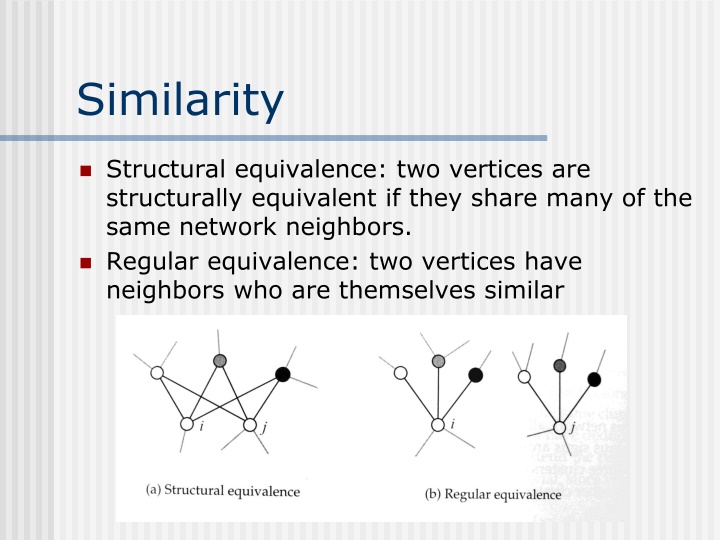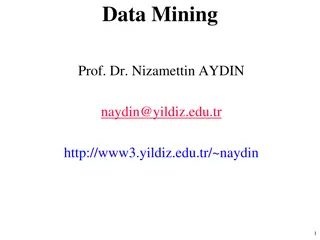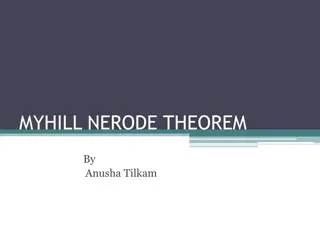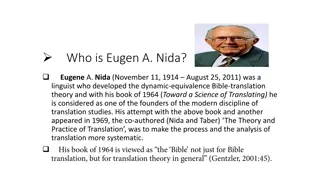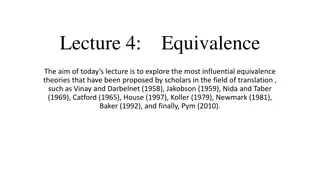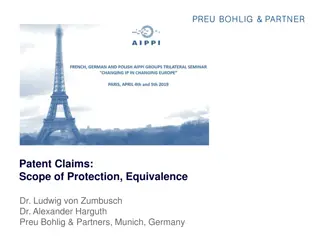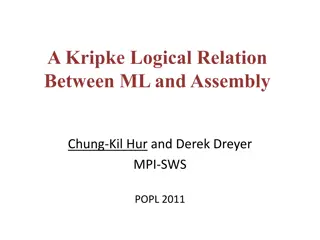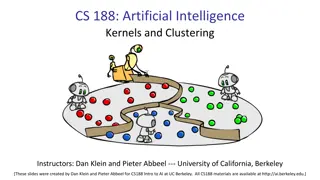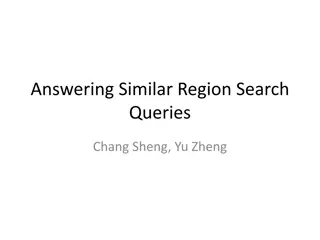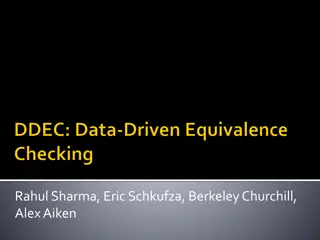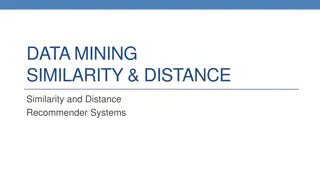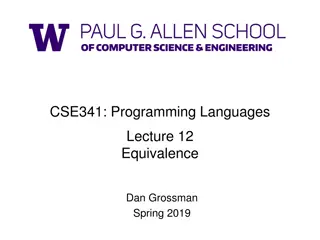Structural Equivalence and Similarity Measures in Network Analysis
This content discusses the concepts of structural equivalence and regular equivalence in network analysis. Structural equivalence is based on shared network neighbors, while regular equivalence considers the similarities of neighboring vertices. Various measures, such as cosine similarity and Pearson coefficient, are explained to quantify structural equivalence. Additionally, the issue of self-similarity and its resolution through diagonal term addition are explored.
Uploaded on Sep 15, 2024 | 0 Views
Download Presentation

Please find below an Image/Link to download the presentation.
The content on the website is provided AS IS for your information and personal use only. It may not be sold, licensed, or shared on other websites without obtaining consent from the author.If you encounter any issues during the download, it is possible that the publisher has removed the file from their server.
You are allowed to download the files provided on this website for personal or commercial use, subject to the condition that they are used lawfully. All files are the property of their respective owners.
The content on the website is provided AS IS for your information and personal use only. It may not be sold, licensed, or shared on other websites without obtaining consent from the author.
E N D
Presentation Transcript
Similarity Structural equivalence: two vertices are structurally equivalent if they share many of the same network neighbors. Regular equivalence: two vertices have neighbors who are themselves similar
Cosine similarity Cosine similarity is a measure of structural equivalence on undirected networks. Define nijas the number of common neighbors of vertices i and j The ijthelement of the matrix A2. It is closely related to the cocitation measure (in directed networks). The problem of normalization?
Cosine similarity Inner product of two vectors x and y Salton regards the ithrow and jthrow of the adjacency matrix as two vectors. Cosine similarity between vertices i and j
Pearson coefficient An alternative way to normalize the count of common neighbors is to compare it with the expected value of that count in a random network. For a large random network (n is large), the expected common neighbors between vertices i and j is kikj/n (as the probability of vertex i s neighbor is also a neighbor of vertex j is roughly kj/n when n is large in a random network)
Pearson coefficient Let Xibe the indicator random variable that a randomly chosen vertex is a neighbor of vertex i.
Pearson coefficient Pearson correlation coefficient
Other measures of structural equivalence Euclidean distance Maximum Euclidean distance between vertices i and j is Normalized Euclidean distance
Regular equivalence The basic idea is to define the similarity score such that i and j have high similarity if they have neighbors k and l that themselves have high similarity. In matrix form, It is related to eignevectors.
The problem of self- similarity It does not give high score for self-similarity Fix the problem by introducing an extra diagonal term In matrix form, Iteration yields
The problem of paths of even length A better definition of regular equivalence: vertices i and j are similar if i has a neighbor k that is itself similar to j. In matrix form,
Katzs similarity is in fact related to the Katz centrality. The ithrow sum of is simply the Katz centrality of vertex i. Remove the bias in favor of high degree
Generalization of regular equivalence In view of all these definitions of regular equivalence, they are all weighted counts of paths between two vertices. In the paper by Cheng-Shang Chang, Chin-Yi Hsu, Jay Cheng, and Duan-Shin Lee, we consider the probability that two vertices appear at the two ends of a randomly selected path. If the similarity measure between any pair of vertices can be represented by a nonnegative matrix, then one can normalize the matrix by the sum of all its elements to obtain a bivariate distribution.
